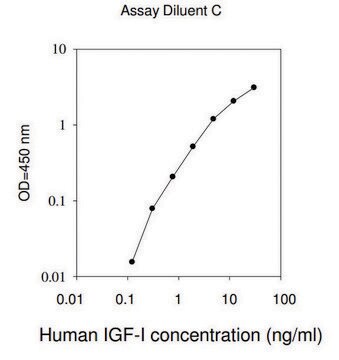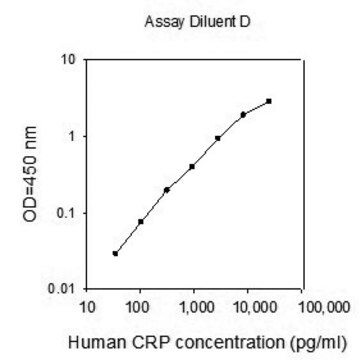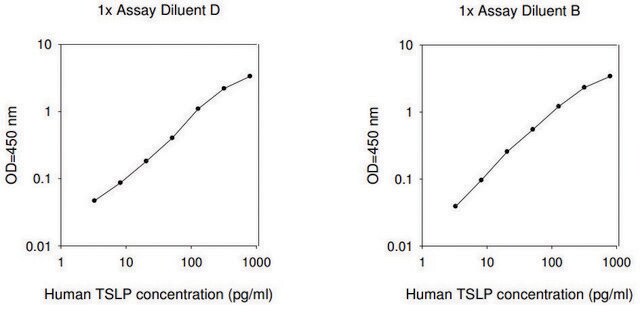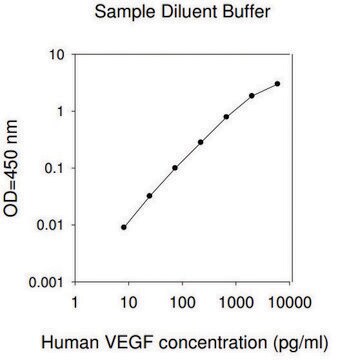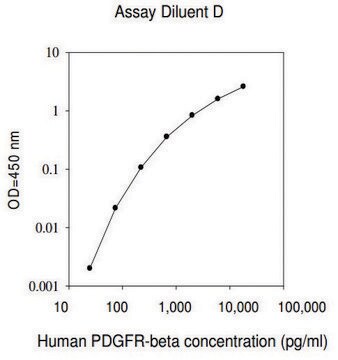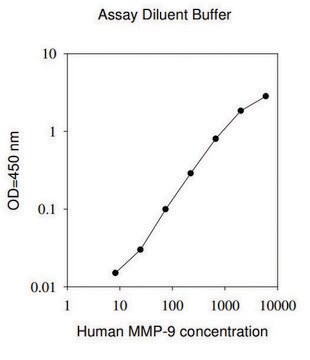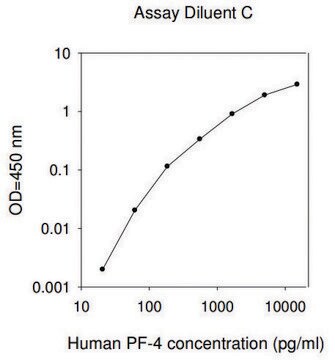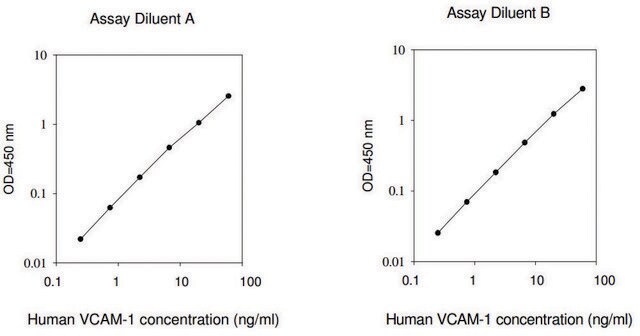おすすめの製品
交差性
human
包装
kit of 96 wells (12 strips x 8 wells)
テクニック
ELISA: suitable
入力
sample type cell culture supernatant(s)
sample type serum
sample type plasma
assay range
inter-assay cv: <12%
intra-assay cv: <10%
sensitivity: 14 pg/mL
standard curve range: 16.38-4000 pg/mL
検出方法
colorimetric
輸送温度
wet ice
保管温度
−20°C
遺伝子情報
human ... SDC1(6382)
詳細
The antibody pair provided in this kit recognize human Syndecan-1/CD138.
アプリケーション
For research use only. Not for use in diagnostic procedures.
Please refer to the attached General ELISA KIT Procedure (sandwich, competitive & Indirect ELISA)
Please refer to the attached General ELISA KIT Procedure (sandwich, competitive & Indirect ELISA)
その他情報
A sample Certificate of Analysis is available for this product.
Please type the word sample in the text box provided for lot number.
Please type the word sample in the text box provided for lot number.
シグナルワード
Warning
危険有害性情報
注意書き
危険有害性の分類
Met. Corr. 1
保管分類コード
8A - Combustible corrosive hazardous materials
引火点(°F)
Not applicable
引火点(℃)
Not applicable
適用法令
試験研究用途を考慮した関連法令を主に挙げております。化学物質以外については、一部の情報のみ提供しています。 製品を安全かつ合法的に使用することは、使用者の義務です。最新情報により修正される場合があります。WEBの反映には時間を要することがあるため、適宜SDSをご参照ください。
毒物及び劇物取締法
キットコンポーネントの情報を参照してください
PRTR
キットコンポーネントの情報を参照してください
消防法
キットコンポーネントの情報を参照してください
労働安全衛生法名称等を表示すべき危険物及び有害物
キットコンポーネントの情報を参照してください
労働安全衛生法名称等を通知すべき危険物及び有害物
キットコンポーネントの情報を参照してください
カルタヘナ法
キットコンポーネントの情報を参照してください
Jan Code
キットコンポーネントの情報を参照してください
Lawrence N Diebel et al.
The journal of trauma and acute care surgery, 84(4), 575-582 (2017-12-30)
Early resuscitation after trauma-hemorrhagic shock with plasma rather than crystalloid may ameliorate systemic endothelial cell (EC) injury and dysfunction (endotheliopathy of trauma). We postulated that endothelial-lined microfluidic networks would be a useful platform to study the EC activation/injury under flow
Mark E Diebel et al.
The journal of trauma and acute care surgery, 84(1), 75-80 (2017-10-19)
The endothelial glycocalyx (GCX) plays an important role in vascular barrier function. Damage to the GCX occurs due to a variety of causes including hypoxia, ischemia-reperfusion, stress-related sympathoadrenal activation, and inflammation. Tranexamic acid (TXA) may prevent GCX degradation. The therapeutic
Jonathan V Martin et al.
American journal of surgery, 214(6), 1166-1172 (2017-10-05)
Geriatric trauma patients have high circulating norepinephrine (NE) levels but attenuated release of epinephrine (Epi) in response to increasing severity of injury. We hypothesized that NE and Epi have different effects on the endothelial and glycocalyx components of the vascular
Josephine Koch et al.
American journal of physiology. Renal physiology, 316(1), F121-F127 (2018-11-01)
Syndecan-1, a transmembrane heparan sulfate proteoglycan, associates with renal and cardiovascular functioning. We earlier reported syndecan-1 to be involved in renal tubular regeneration. We now examined plasma values of syndecan-1 in a hemodialysis cohort and its association with volume and
Kohji Uzawa et al.
Journal of anesthesia, 34(1), 36-46 (2019-10-17)
Fluid therapy focused on glycocalyx (GCX) protection in hemorrhagic shock is a current focus of research. Hydroxyethyl starch (HES) solution is commonly used for fluid resuscitation; however, its effects on the GCX remain unclear. The primary aim of this study
ライフサイエンス、有機合成、材料科学、クロマトグラフィー、分析など、あらゆる分野の研究に経験のあるメンバーがおります。.
製品に関するお問い合わせはこちら(テクニカルサービス)